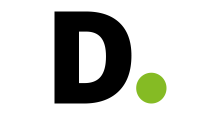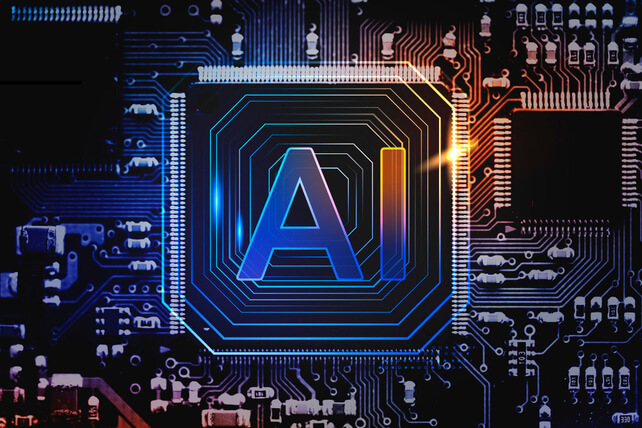Hiring in 2025 moves faster than ever, and recruiters can’t afford to lose top candidates to slow, inconsistent, or outdated interview processes. AI-powered interview tools have stepped in to bridge the gap, automating tedious tasks like scheduling, note-taking, and screening, while delivering deeper insights to help teams hire with confidence. From chat-based first interviews to advanced analytics on live conversations, these platforms are transforming how talent acquisition teams connect with candidates.
In this guide, we’ll explore the top 10 AI interview tools recruiters are using in 2025 to save time, improve fairness, and make better hiring decisions.
1) HireVue
HireVue has become a staple for enterprise interviewing, combining structured video interviews with conversational AI and built-in assessments. Recruiters like that it handles everything from automated candidate screening and scheduling to on-demand video responses that hiring managers can review asynchronously. Its AI focuses on question standardization, answer insights, and guide rails that help interviewers stick to job-related competencies. For high-volume roles, the workflow is set-and-forget: candidates move from application to assessment to interview with minimal manual effort. For specialized or leadership roles, structured live interviews and scoring rubrics help teams focus on verified signals rather than gut feel. If you’re consolidating multiple point tools into one platform, HireVue’s breadth and enterprise-grade controls are hard to beat.
2) Paradox (Olivia)
Paradox is best known for Olivia, the AI recruiting assistant that chats with candidates, screens them, schedules interviews, and keeps the process moving 24/7—especially useful for hourly and high-volume hiring. The “interview tool” magic here is the orchestration: Olivia coordinates availability, manages reminders, and can conduct simple chat-based pre-screens before surfacing qualified applicants to your ATS and calendars. For distributed hiring teams, that automation removes most of the coordination drag that slows down interviews. Paradox also shines in mobile-first experiences, letting candidates progress from application to confirmed interview in minutes. If speed-to-schedule and candidate responsiveness are your biggest bottlenecks, Paradox tends to pay for itself quickly.
3) Spark Hire
Spark Hire specializes in one-way and live video interviews with a strong emphasis on simplicity and scale. Recruiters send candidates a link to record answers to structured questions at their convenience; hiring teams review on their own time and can rate, comment, and share clips inside the platform or through ATS integrations. While Spark Hire isn’t a full interview-intelligence suite, it layers in AI-assisted summarization and scoring to help recruiters cut review time and focus on signals that matter. The platform’s straightforward UX, branding options, and bulk-invite features make it an easy lift for teams moving off phone screens or managing large seasonal intakes.
4) myInterview
myInterview focuses on one-way video with a candidate-friendly interface, AI-assisted highlights, and easy sharing for collaborative review. Recruiters can tailor questions to core competencies, centralize stakeholder feedback, and quickly separate signal from noise at the top of the funnel. The AI helps flag standout answers and themes so teams spend less time watching full recordings. If you’re comparing options, Hireflix is a close alternative with similar strengths: simple one-way video flows, thoughtful branding, and time-savers for high-volume screens. Both tools are ideal when you want to modernize first-round interviews without overhauling your entire stack.
5) BrightHire
BrightHire focuses on interview intelligence: recording, transcribing, and analyzing live interviews so recruiters and hiring managers can make better decisions with consistent evidence. Its AI highlights key moments, surfaces skills discussed, and makes it easy to compare candidates on the same criteria without replaying long recordings. Teams use BrightHire to train interviewers, calibrate rubrics, and document decisions for compliance and fairness. The payoffs show up in tighter debriefs, fewer “I just have a good feeling” votes, and faster consensus. For companies scaling hiring without losing rigor, BrightHire’s structured notes and searchable interview library become an institutional memory that outlives interviewer turnover.
6) Metaview
Metaview automates interview note-taking so interviewers can be fully present in the conversation. The tool joins interviews, generates accurate, structured notes mapped to your scorecards, and drafts feedback summaries that interviewers can validate in a few clicks. Over time, those insights help TA leaders spot inconsistency across interviewers, identify questions that correlate with success, and tighten the loop between job requirements and what’s actually asked. Recruiters like Metaview because it reduces the post-interview admin to minutes and produces a clear, standardized record you can share with hiring managers. If your process struggles with late or low-quality feedback, this is a practical fix.
7) Sapia.ai
Sapia.ai (formerly PredictiveHire) popularized the “first interview by chat.” Candidates complete an asynchronous, structured text interview where an AI asks behavioral questions calibrated to the role. The system analyzes answers for competencies, values alignment, and communication signals, then ranks candidates and generates personalized feedback. The experience is inclusive, mobile-friendly, and fast; recruiters get a shortlist within hours of opening the role. Because every candidate receives the same questions in the same order, teams gain consistency and reduce bias drivers like small talk, accents, or camera comfort. Sapia.ai fits especially well in retail, hospitality, and other high-volume environments where you want to fairly screen thousands without adding headcount.
8) Humanly.io
Humanly.io blends AI screening, scheduling, and interview intelligence—particularly for SMB and mid-market teams that want automation without enterprise bloat. Its chatbot pre-qualifies applicants based on must-have criteria, then books interviews into recruiter and hiring manager calendars. During live calls, Humanly captures transcripts and auto-generates structured notes and scorecard suggestions, which accelerates debriefs and strengthens compliance documentation. The platform also drafts candidate follow-ups and “next-step” messages, shaving hours off recruiter task lists. If you’re aiming for an all-in-one screen-to-debrief layer with approachable pricing, Humanly hits a useful balance between capability and simplicity.
9) Clovers
Clovers combines live interview guidance, coaching, and compliance-minded recording to help teams run more equitable, structured interviews. Its AI prompts interviewers with calibrated questions tied to your competencies, nudges panelists away from leading or illegal questions, and assembles evidence-based scorecards automatically. Post-interview, Clovers turns the conversation into searchable highlights and a concise recap you can use in debriefs or share with stakeholders who missed the call. For TA leaders looking to uplevel interviewer consistency and reduce legal risk while improving candidate experience, Clovers functions like a GPS for interviews—quietly steering everyone back to the route when they drift.
10) XOR
XOR started as a conversational recruiting platform and has grown into a robust automation suite that includes AI-driven screening and interview scheduling across SMS, WhatsApp, and web chat. For interview workflows, XOR’s bot handles qualification, collects availability, and can run simple pre-interviews before escalating candidates to humans. It’s designed for scale: bulk campaigns, instant reminders, multiple languages, and strong integrations with popular ATS tools. Recruiters use XOR to keep pipelines warm, reduce no-shows, and push candidates smoothly toward booked interviews without endless back-and-forth. If your hiring volumes spike and your team can’t keep up with coordination, XOR is a practical pressure valve.
How Recruiters Use these Tools in 2025
Most teams run a hybrid stack: one tool to automate early screening and scheduling, and another to upgrade live interviews and debriefs. A common pattern is pairing a conversational assistant (Paradox or XOR) with interview intelligence (BrightHire, Metaview, or Clovers). High-volume employers add an asynchronous layer (HireVue, Spark Hire, Sapia.ai, or myInterview) so candidates can respond on their own time while recruiters review in batches. The result is a faster, fairer process with cleaner data for compliance and decision-making.
What Improved vs. Previous Years
Two big shifts define 2025. First, AI is now embedded into workflows you already run—note-taking, summaries, scorecards, and reminders—rather than being a separate “feature” you need to manage. Second, fairness and transparency have matured: structured questions, consistent rubrics, feedback audits, and opt-in candidate communications are standard. The upside is less variance across interviewers and a paper trail that holds up to internal and external scrutiny.
Buyer Tips Before You Pilot
Define the problem you need to solve—speed-to-schedule, screen consistency, interview quality, or compliance—and pilot the tool that primarily fixes that. Map required integrations with your ATS and calendars, and test on one role family first. Involve hiring managers early to reduce change-management friction, and compare pre- and post-pilot metrics like time-to-first-interview, no-show rate, feedback completion time, and pass-through rate to onsite. Finally, validate accessibility, data retention, and bias-mitigation settings with legal and DEI partners before you scale.
Final word
AI interview tools in 2025 are less about flashy features and more about removing the drag from your day: messy scheduling, inconsistent notes, meandering questions, and fuzzy debriefs. Whether you start with a chat-based screen, one-way video, or interview intelligence, the best next step is a focused pilot that measures outcomes. If you pick the tool that fixes your biggest bottleneck, you’ll feel the improvement in weeks—and your candidates will, too.














